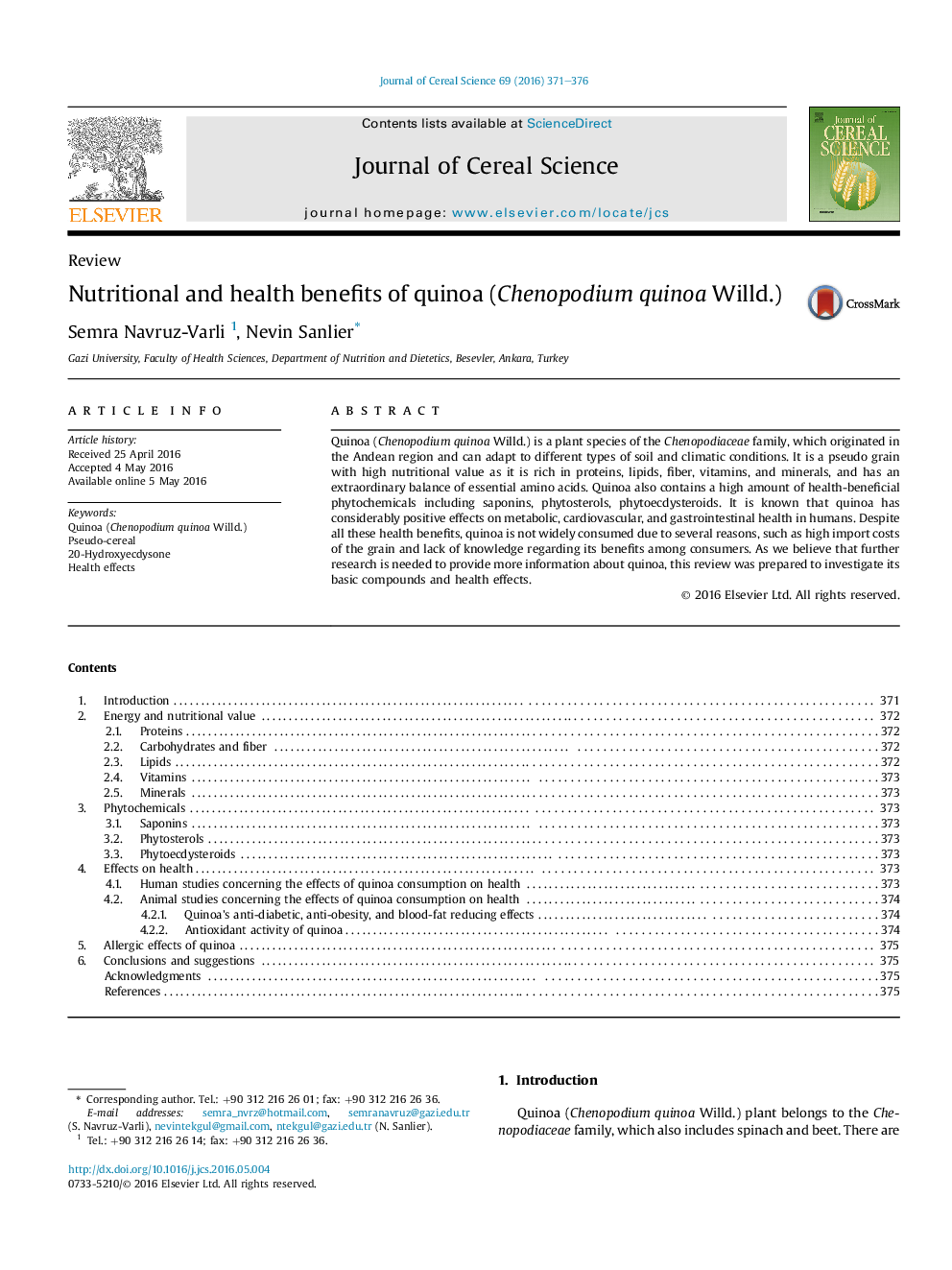| Article ID | Journal | Published Year | Pages | File Type |
|---|---|---|---|---|
| 4515610 | Journal of Cereal Science | 2016 | 6 Pages |
•Quinoa is an excellent nutrient with a high nutritional content.•Quinoa may benefit high-risk group people, such as children and the elderly.•Quinoa's nutritional content is higher than those of other grains.•Quinoas secondary metabolites could also contribute to human health and wellness.
Quinoa (Chenopodium quinoa Willd.) is a plant species of the Chenopodiaceae family, which originated in the Andean region and can adapt to different types of soil and climatic conditions. It is a pseudo grain with high nutritional value as it is rich in proteins, lipids, fiber, vitamins, and minerals, and has an extraordinary balance of essential amino acids. Quinoa also contains a high amount of health-beneficial phytochemicals including saponins, phytosterols, phytoecdysteroids. It is known that quinoa has considerably positive effects on metabolic, cardiovascular, and gastrointestinal health in humans. Despite all these health benefits, quinoa is not widely consumed due to several reasons, such as high import costs of the grain and lack of knowledge regarding its benefits among consumers. As we believe that further research is needed to provide more information about quinoa, this review was prepared to investigate its basic compounds and health effects.
